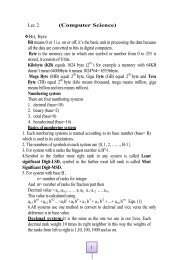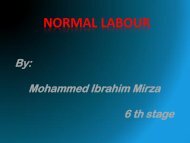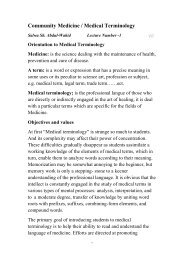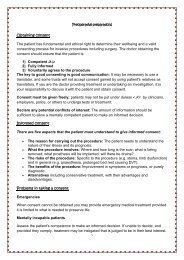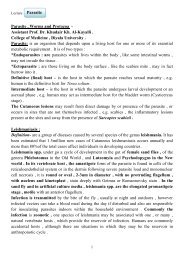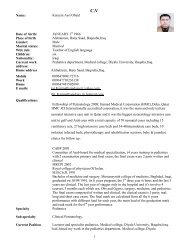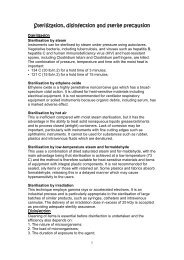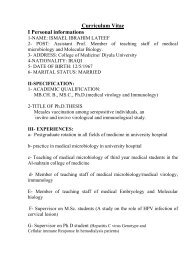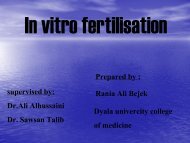11.1. Introducing Gregor Mendel (p. 174)
11.1. Introducing Gregor Mendel (p. 174)
11.1. Introducing Gregor Mendel (p. 174)
Create successful ePaper yourself
Turn your PDF publications into a flip-book with our unique Google optimized e-Paper software.
second child born still has 1/4 chance of having attachedearlobes.G. <strong>Mendel</strong> Did a Testcross (Fig. 11.6 )1. <strong>Mendel</strong> performed testcrosses by crossing his F 1 plantswith homozygous recessive plants.2. Results indicated the recessive factor was present in the F 1plants; they were heterozygous.3. A testcross is between an individual with dominantphenotype and individual with recessive phenotype to see ifthe individual with dominant phenotype is homozygous orheterozygous.11.3. <strong>Mendel</strong> Did a Dihybrid Cross (page 181)A. Dihybrid Crosses. (Fig. 11.7)1. A dihybrid cross is an experimental cross between twoparent organisms that are true-breeding for different forms oftwo traits; produces offspring heterozygous for both traits.(TTGG x ttgg ) TtGg2. <strong>Mendel</strong> observed that the F 1 individuals were dominant inboth traitsB. Plants to Self-Pollinate.1. <strong>Mendel</strong> observed four phenotypes among F 2 offspring; hededuced second law of heredity.2. <strong>Mendel</strong>'s law of independent assortment states membersof one pair of factors assort independently of members ofanother pair; all combinations of factors occur in gametes.



